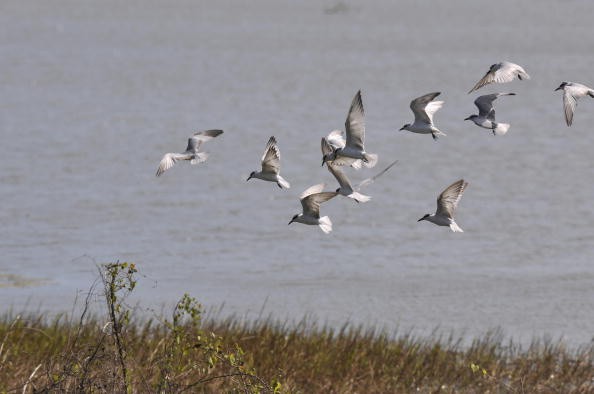Due to the drought, large areas of Kansas that are often lush and green are now bone dry, which is predicted to affect various bird species that migrate through the region.

Drying Up
The largest interior wetlands in the United States are found in Kansas at Cheyenne Bottoms, about 110 miles northwest of Wichita.
However, the marshes are almost entirely dry due to a drought that has been engulfing the area since June 2022.
According to Jason Wagner, manager of Cheyenne Bottoms Wildlife Area, "We are parched. There is no water on the site." This year is the ideal storm.
More than a third of the whole state of Kansas is currently experiencing "Exceptional Drought," the highest level of drought the U.S. Drought Monitor can assess, as of November 15. Zero percent of Kansas's territory is unaffected by such conditions, while the remainder of the state experiences conditions ranging from "Abnormally Dry" to "Extreme Drought."
Drought Records
According to a Kansas State University report, the third quarter of 2022 is the driest since records began in 1895 in southeast Kansas and the second driest in southcentral Kansas. These conditions are thought to have been caused by deficient rainfall and high temperatures.
There has been widespread animal mortality, especially cattle, due to this exceptionally hot and dry weather. Over 2,000 cattle were said to have perished from heatstroke over a few days in July 2022.
Endangering Migratory Birds

It is also anticipated that the drying out of Cheyenne Bottoms, which serves as a rest area for up to one million birds annually on their yearly migrations south, would significantly affect other types of animals.
"The Kansas wetlands are particularly important for migratory shorebirds, waterfowl, cranes, and other waterbirds," said Tom Langen, a professor of wetlands ecology at Clarkson University in New York. "Shorebirds and waterfowl breed in the Arctic tundra, the great boreal forest belt bogs, or the prairie pothole regions.
They make a pit stop in Kansas because of the state's extensive, shallow wetlands, which are teaming with minute worms and other invertebrates that supply food for shorebirds and seeds that certain ducks eat, according to Langen.
The birds use the Kansas wetlands on their way back in the spring. "The birds then travel south, to the Gulf Coast, Central, and South America, and some as far south as Chile and Argentina."
But in 2022, the wetlands don't experience their customary inflow.
According to Wagner, the number of birds we have this year is zero. Because there is nothing to stop for, most of them aren't even stopping.
Langen stated that population decreases in certain long-distance migrants are likely to occur, but it truly depends on whether they have access to other places.
"It seems anticipated that there will be population decreases in large-scale, extended regional droughts, like those experienced in the Plains and throughout the American West, due to low availability of high-quality stopover habitat and crowding at those that remain," he continued.
In contrast to land-based creatures, these migratory birds have greater geographic flexibility because of their capacity to fly, so not all is lost, according to Webb.
Serious Climate Issues
Although previous Kansas droughts have lasted for many years, meteorologists still determine how long this one will endure.
According to many climate experts, the impacts of climate change will cause extreme weather occurrences like the Kansas drought to worsen over time.
Related Article: New Pandemic in Slow Motion: UN Reports Severe Drought Might be the Next Global Crisis
For more environmental news, don't forget to follow Nature World News!
© 2025 NatureWorldNews.com All rights reserved. Do not reproduce without permission.





